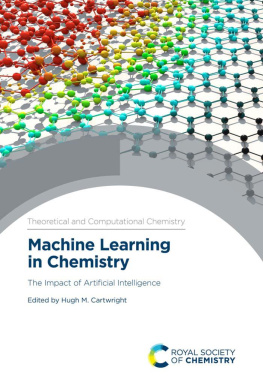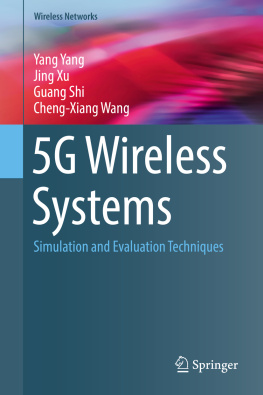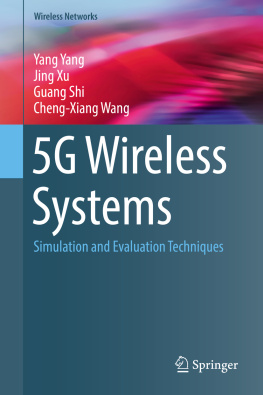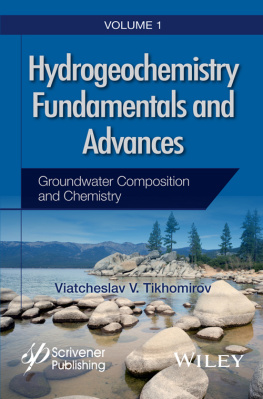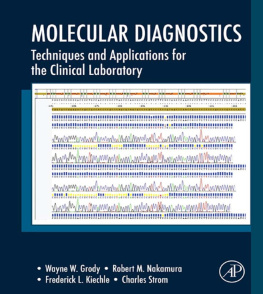Cover

| title | : | Electrogenerated Chemiluminescence Monographs in Electroanalytical Chemistry and Electrochemistry |
| author | : | Bard, Allen J. |
| publisher | : | CRC Press |
| isbn10 | asin | : | 082475347X |
| print isbn13 | : | 9780824753474 |
| ebook isbn13 | : | 9780203027011 |
| language | : | English |
| subject | Chemiluminescence, Electrochemistry. |
| publication date | : | 2004 |
| lcc | : | QD505.8.E54 2004eb |
| ddc | : | 541/.37 |
| subject | : | Chemiluminescence, Electrochemistry. |
Page a
ELECTROGENERATED CHEMILUMINESCENCE
MONOGRAPHS IN ELECTROANALYTICAL CHEMISTRY AND ELECTROCHEMISTRY
Consulting editor
Allen J. Bard
Department of Chemistry
University of Texas
Austin, Texas
Electrochemistry at Solid Electrodes, Ralph N. Adams
Electrochemical Reactions in Nonaqueous Systems, Charles K. Mann and Karen Barnes
Electrochemistry of Metals and Semiconductors: The Application of Solid State Science to Electrochemical Phenomena, Ashok K. Vijh
Modern Polarographic Methods In Analytical Chemistry, A. M. Bond
Laboratory Techniques in Electroanalytical Chemistry, edited by Peter T. Kissinger and William R. Heineman
Standard Potentials in Aqueous Solution, edited by Allen J. Bard, Roger Parsons, and Joseph Jordan
Physical Electrochemistry: Principles, Methods, and Applications, edited by Israel Rubinstein
Scanning Electrochemical Microscopy, edited by Allen J. Bard and Michael B. Mirkin
Electrogenerated Chemiluminescence, edited by Allen J. Bard
ADDITIONAL VOLUMES IN PREPARATION
Page i
ELECTROGENERATED CHEMILUMINESCENCE
EDITED BY
ALLEN J. BARD
The University of Texas at Austin
Austin, Texas, U.S.A.

MARCEL DEKKER, INC.
NEW YORK
Page ii
Although great care has been taken to provide accurate and current information, neither the
author(s) nor the publisher, nor anyone else associated with this publication, shall be liable
for any loss, damage, or liability directly or indirectly caused or alleged to be caused by
this book. The material contained herein is not intended to provide specific advice or rec
ommendations for any specific situation.
Trademark notice: Product or corporate names may be trademarks or registered trademarks
and are used only for identification and explanation without intent to infringe.
Library of Congress Cataloging-in-Publication Data
A catalog record for this book is available from the Library of Congress.
ISBN 0-203-02701-9 Master e-book ISBN
ISBN: -8247-5347-X (Print Edition)
Headquarters
Marcel Dekker, Inc., 270 Madison Avenue, New York, NY 10016, U.S.A.
tel: 212-696-9000; fax: 212-685-4540
This edition published in the Taylor & Francis e-Library, 2005.
To purchase your own copy of this or any of Taylor & Francis or Routledges collection of thousands of eBooks please go to www.eBookstore.tandf.co.uk.
Distribution and Customer Service
Marcel Dekker, Inc., Cimarron Road, Monticello, New York 12701, U.S.A.
tel: 800-228-1160; fax: 845-796-1772
Eastern Hemisphere Distribution
Marcel Dekker AG, Hutgasse 4, Postfach 812, CH-4001 Basel, Switzerland
tel: 41-61-260-6300; fax: 41-61-260-6333
World Wide Web
http://www.dekker.com
The publisher offers discounts on this book when ordered in bulk quantities. For more in
formation, write to Special Sales/Professional Marketing at the headquarters address
above.
Copyright2004byMarcel Dekker, Inc.All Rights Reserved.
Neither this book nor any part may be reproduced or transmitted in any form or by any
means, electronic or mechanical, including photocopying, microfilming, and recording, or
by any information storage and retrieval system, without permission in writing from the
publisher.
Page iii
Preface
Although the first experiments in electrogenerated chemiluminescence (ECL) were carried out about 40 years ago, no comprehensive monograph devoted to this field has appreared. This is very surprising, since ECL has entered the main-stream of research and has found a number of applications. Numerous organic and inorganic compounds have been shown to be capable of producing ECL and the study of ECL reactions has provided useful insight into the mechanisms and energetics of electron transfer reactions and electrogenerated intermediates. The use of coreactants in ECL allowed practical analytical applications and also provided information about short-lived intermediates of the coreactant species. In terms of applications, ECL is widely used in immunoassay, thanks largely to the initial development efforts at IGEN, Inc., and now accounts for hundreds of millions of dollars in sales per year. Moreover, light emission in polymer and solid-state electrochemical cells is actively being investigated and developed (often without recognition of the ECL roots of such studies), with the promise of useful light sources and displays. It is clearly time to publish this first monograph, which provides comprehensive reviews of different aspects of ECL.
Chapters 17 of this book present an overview and brief history of ECL (Chapter 1), both the experimental (Chapter 2) and theoretical aspects of ECL (Chapters 3 and 4), a review of the behavior of coreactants (Chapter 5), organic molecules (Chapter 6) and metal chelates (Chapter 7). The other chapters are dedicated to applications: immunoassay (Chapter 8), other analytical uses, e.g. in chromatography (Chapter 9), and devices, such as systems for light production and displays (Chapter 10). Finally there is a brief chapter containing several additional topics and conclusions. Although some knowledge of electrochemistry and physical chemistry is assumed, the key ideas are introduced in Chapter 1 and discussed at a level suitable for beginning graduate students.
Page iv
I would like to thank my many students, postdoctoral fellows, and colleagues, and the contributors, who have done so much to develop ECL. I also thank Drs. David Hercules and Ed Chandross, two pioneers in this field, for their comments on Chapter 1. The future for ECL remains bright. It is an interesting and aesthetically pleasing phenomenon. It is a shame it has not yet found its way into elementary general chemistry texts!
Allen J. Bard
Page v
Contents
Next page


